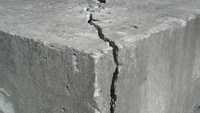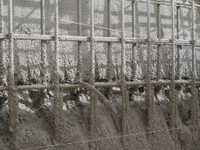Repair and Protection
Concrete is a composite material composed of water, fine and coarse granular material embedded in a hard paste, resulting from cement hydration, that fills the space among the aggregate particles and glues them together. Damages to concrete result from the presence of three simultaneous factors: interconnected porosity, presence of water or moisture, and exposure to aggressive agents. A variety of processes contribute to concrete deterioration. They are classified as physical if resulting from a fire, water leakage, shrinkage, abrasion, erosion or freeze-thaw cycle, chemical if resulting from carbonation, sulfate, chloride attack, bacterial or other biological action, efflorescence or leaching, and alkali-silica reaction, mechanical if caused by an overload, movement, or impact, and finally application damage is attributable to an inappropriate concrete mix design or placing.
Application damages include pinholes that develop as a result of plastic shrinkage due to an inappropriate water-cement ratio of the mix design or lack of mold oil at the time of de-shuttering, honeycombs described as superficial damages taking the form of exposed aggregates up to a thickness of 20mm, that result from a lack of concrete vibration or from poor workability at the time of placing and cracks that develop in the plastic phase of concrete such as plastic shrinkage cracks due to insufficient early curing and loss of water by fast evaporation.
Holderchem and its partners, with their impressive track record of successfully completed water-tightness assignments over decades, offer proven and well-tested solutions for waterproofing, concrete repair, and building protection.





